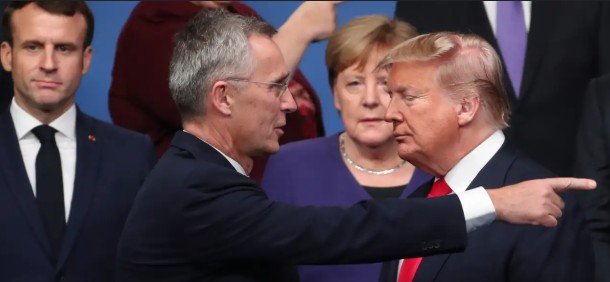The success of the new NATO deal will depend on Europe’s ability to unite around a common security vision while ensuring political and economic stability
As U.S. President Donald Trump prepares for his second term in office, the transatlantic alliance faces a defining moment. Trump’s renewed pressure on NATO allies to significantly increase their defense spending—coupled with his repeated threats to reduce U.S. commitment if Europe does not comply—has left European nations scrambling to address new security challenges. The proposed Atlantic Charter 2025, a framework aimed at redefining NATO’s strategic priorities, is now at the center of transatlantic negotiations. This deal is expected to shape the future of the alliance and significantly impact the security landscape in Europe and beyond.
Trump’s Demands: A NATO Shake-Up
From his first term, Trump has been vocal about NATO’s financial imbalance, often criticizing European nations for failing to meet their defense spending commitments. His administration has argued that while the U.S. shoulders a disproportionate burden of NATO’s costs, many European allies continue to underfund their militaries.
Now, under Atlantic Charter 2025, European nations are expected to meet new targets:
- Defense spending above 3% of GDP by 2030, with an increase to two-thirds of NATO’s military capability coming from European forces by 2035.
- Establishment of two European Shield Corps stationed in Poland and Romania, with four reserve war-fighting corps to reinforce NATO’s eastern flank.
- Expansion of airlift, refueling, and operational intelligence capabilities, areas in which Europe has long relied on the U.S.
- Strengthening NATO’s nuclear deterrence in response to Russian aggression, potentially involving greater nuclear cooperation between Britain and France.
In return for Europe’s increased financial and military commitments, the U.S. would maintain its troop presence on the continent, including the U.S. Army’s V Corps, the Third Air Force, and the U.S. Navy’s 6th Fleet.
Europe’s Mixed Response: Frustration and Realignment
While NATO leaders broadly acknowledge the need for a stronger European military posture, Trump’s approach has sparked mixed reactions across Europe.
Germany and France: Reluctant Leaders
Germany and France, two of NATO’s largest economies, are struggling to meet existing defense spending commitments. With German and French domestic politics in turmoil, the prospect of pushing military budgets above 3% of GDP is met with strong political resistance. French President Emmanuel Macron has previously called for a more independent European defense strategy, signaling concerns about over-reliance on an unpredictable U.S. administration.
Eastern Europe: Strong Supporters of the Plan
Poland, Romania, and the Baltic states have been among the strongest supporters of NATO’s increased military presence in Eastern Europe. Given their proximity to Russia and growing concerns over Moscow’s aggressive foreign policy, these nations are more willing to meet the new financial demands in exchange for a stronger NATO security guarantee.
Southern Europe: Economic Constraints
Spain and Italy, both struggling with economic stagnation, are among NATO’s lowest spenders. With economic growth averaging less than 1% in 2024, increasing military budgets without severe cuts in other sectors will be politically challenging.
A Transatlantic Divide: Strategic and Economic Consequences
The new NATO deal is not just about military spending—it represents a fundamental shift in the alliance’s power dynamics and future direction.
Security Dependence on the U.S. – If European nations fail to meet Trump’s expectations, Washington could scale back its military presence, creating uncertainty in Europe’s security landscape. This would increase the urgency for a more independent European defense policy.
Geopolitical Realignment – Some European nations may look to alternative security partnerships, such as strengthening defense ties within the European Union or deepening cooperation with the UK and Canada.
Economic Strain – For countries with limited financial resources, meeting these new defense targets could require significant cuts to social programs, potentially leading to domestic unrest.
The NATO Summit: A Defining Moment for the Alliance
The upcoming June NATO Summit in The Hague will serve as a critical test for both Trump’s leadership and Europe’s commitment to the alliance. The summit is expected to:
- Formalize the Atlantic Charter 2025, detailing new spending commitments and military expansion plans.
- Determine whether European nations will accept Trump’s terms or push for a compromise approach.
- Address growing concerns about NATO’s nuclear deterrence strategy and Russia’s increasing military threats.
The Future of NATO Under Trump 2.0
As NATO enters a new phase, the balance of power within the alliance is shifting. Trump’s demands for increased European military spending signal a potential recalibration of U.S. defense priorities, with more focus on Asia and less automatic commitment to European security.
The success of the new NATO deal will depend on Europe’s ability to unite around a common security vision while ensuring political and economic stability. Failure to do so could lead to a weakened alliance and embolden adversaries like Russia and China.
As Europe braces for this new reality, the question remains: Will NATO adapt to Trump’s demands, or will the alliance face its most significant crisis yet?


